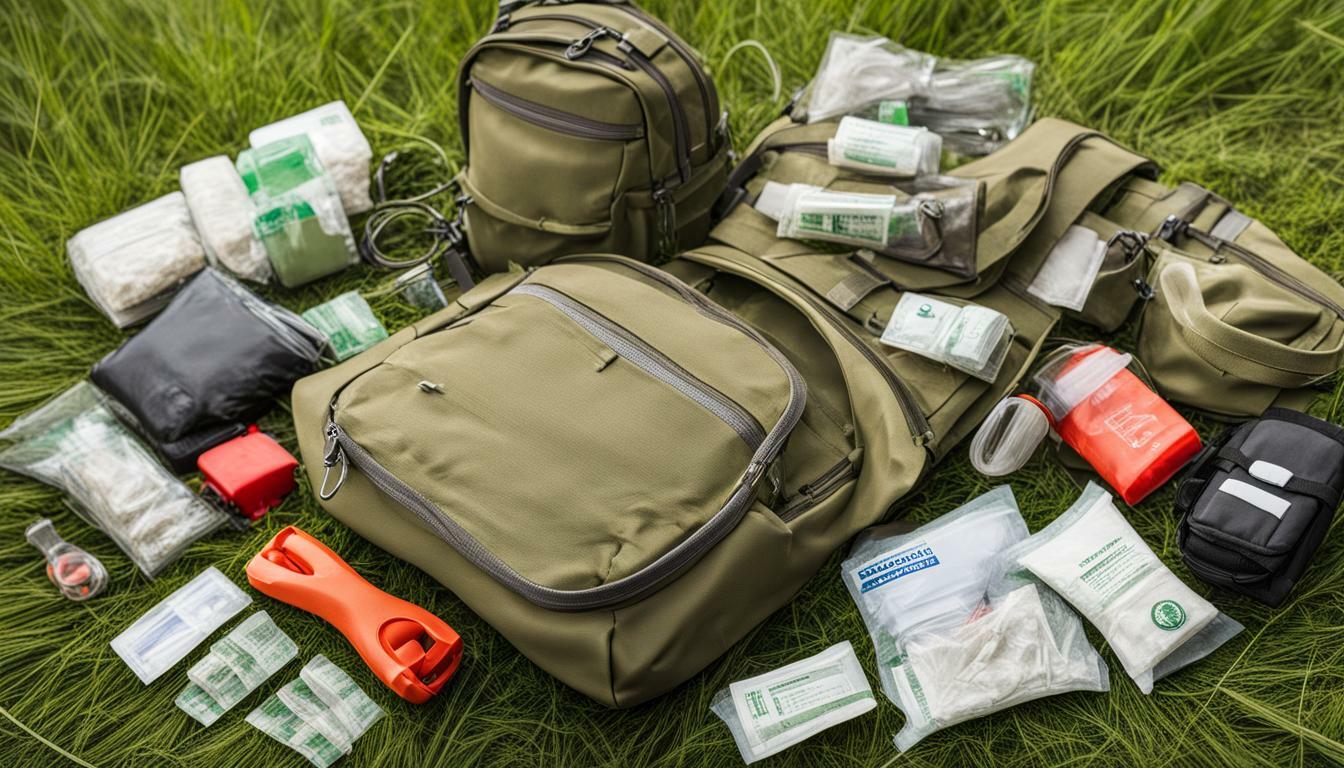Welcome to our article on first aid kits for wildlife conservationists – a crucial aspect of nature protection. As conservationists work towards preserving the UK’s natural habitats and wildlife, they face unique risks and challenges that require specialized safety equipment and first aid supplies. This is where wildlife first aid kits come into play – providing essential tools and knowledge to ensure the safety of both conservationists and wildlife in the field.
In this section, we will delve deeper into the significance of first aid kits for wildlife conservationists and nature protection accessories for effective fieldwork. Our discussion will feature relevant SEO keywords such as wildlife first aid kits, wildlife conservation first aid, nature protection accessories, wildlife safety equipment, wildlife first aid supplies, wildlife emergency kits, and conservationist first aid gear. Join us as we explore the essential components of these kits, understand the unique risks faced by wildlife conservationists, and learn about common wildlife injuries and first aid techniques.
The Role of Wildlife Conservationists in Nature Protection
Wildlife conservationists play a crucial role in protecting and preserving the UK’s natural habitats and wildlife. Their work involves monitoring and managing wildlife populations, restoring and improving habitats, and conducting research to better understand the needs of different species. By doing this, they ensure that future generations will be able to enjoy the same biodiversity and natural beauty that we do today.
However, the role of a wildlife conservationist is not without its challenges. They often work in remote and challenging environments, dealing with unpredictable weather conditions, difficult terrain, and potentially dangerous animals. Therefore, it’s important that they have the necessary skills and equipment to handle emergencies and minimize risks.
To this end, having proper first aid resources is essential for wildlife conservationists. In the event of an emergency, having the right equipment and knowledge can mean the difference between life and death for both wildlife and conservationists.

“Wildlife conservationists play a crucial role in protecting and preserving the UK’s natural habitats and wildlife.”
Understanding the Unique Risks Faced by Wildlife Conservationists
Wildlife conservationists play a crucial role in protecting and preserving the UK’s natural habitats and biodiversity. Their work involves conducting research, monitoring wildlife populations, and implementing conservation strategies.
However, this work comes with inherent risks and challenges. Wildlife conservationists are often exposed to unpredictable and hazardous environments, putting them at risk of injuries, bites, and stings from wildlife.
In addition, conservationists are often required to handle wildlife in distress, which can be dangerous for both the animals and the conservationists. To mitigate these risks, it is crucial for wildlife conservationists to be equipped with specialized safety equipment and first aid supplies.
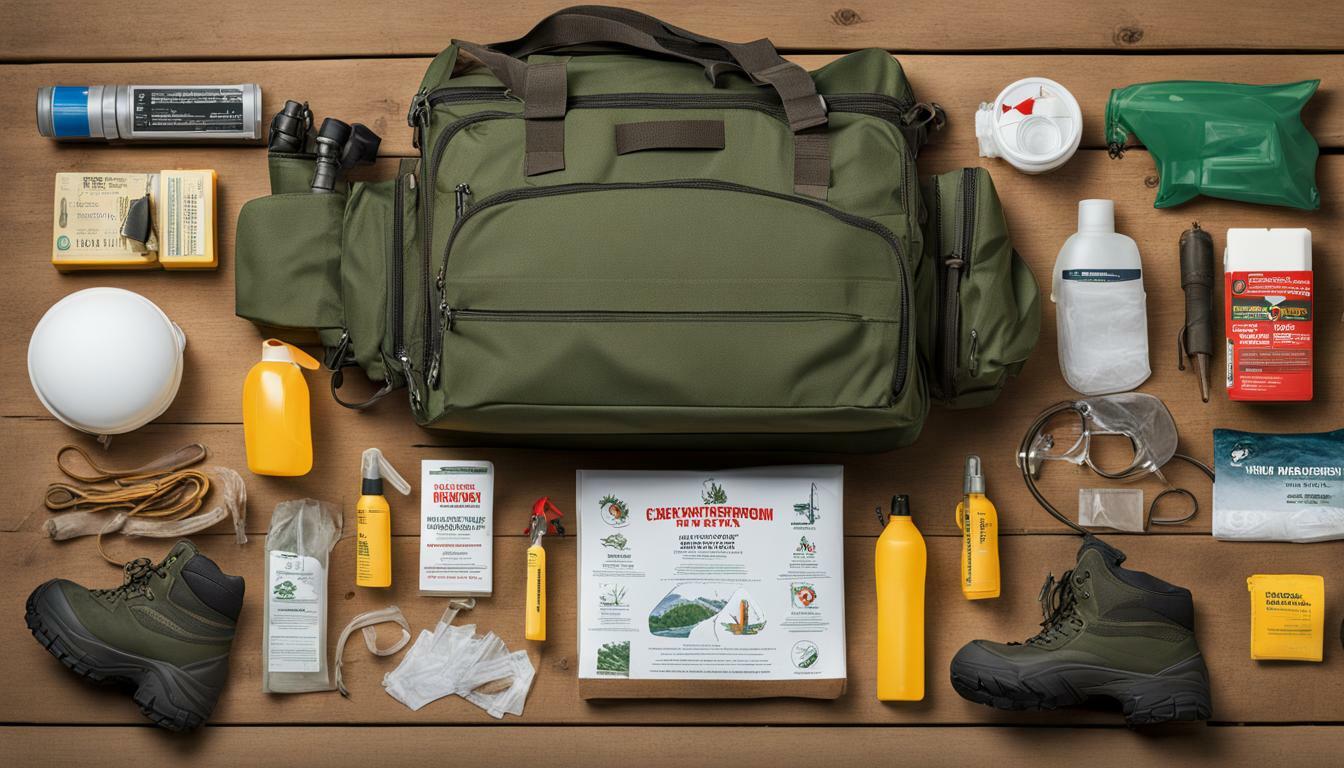
One of the most significant risks that wildlife conservationists face is animal bites and stings. This can occur when handling or approaching injured wildlife, or during research activities. In such cases, it is essential to have proper first aid supplies, including antiseptics, wound dressings, and splints, to treat any injuries sustained.
Conservationists are also at risk of exposure to harsh environmental conditions, including extreme temperatures, sunburn, and dehydration. Hence, it is crucial to include nature protection accessories in the first aid kit, such as sunscreen and insect repellent.
Proper safety equipment, including gloves and eye protection, can prevent or mitigate the risks of being exposed to hazardous chemicals, animal feces, and other contaminants.
By understanding the unique risks faced by wildlife conservationists, we can ensure that they have the necessary equipment and supplies to perform their duties safely and efficiently. Wildlife safety equipment and first aid supplies must be prioritized to protect the conservationists and the wildlife they work to protect.
Essential Components of Wildlife First Aid Kits
First aid kits for wildlife conservationists must be well-equipped to address a range of injuries and emergencies. It is essential to include the following components in any wildlife first aid kit:
| Item | Purpose |
|---|---|
| Wound dressings | To clean and dress wounds |
| Antiseptics | To prevent infection |
| Bandages | For support and to control bleeding |
| Splints | To immobilize fractures or broken bones |
| Gloves | To protect against bodily fluids and infections |
| Emergency contact information | To get help quickly |
It is important to remember that wildlife first aid kits should also include specialized tools and equipment specific to wildlife emergencies. These may include:
- Animal handling gloves
- Stretcher or carrier
- Tick removal tool
- Reusable cold pack
- Saline solution
- Small scissors and tweezers
When creating or purchasing a wildlife first aid kit, it is also crucial to consider the specific needs of the conservationist and the types of wildlife they may encounter. For instance, if the conservationist is working in areas with venomous snakes, it may be necessary to include a snakebite kit and appropriate antivenom. Furthermore, it is crucial to ensure that all items in the kit are undamaged and in good condition.

By including these essential components and tailoring the kit to individual needs, wildlife conservationists can confidently provide necessary first aid to both themselves and the injured wildlife they encounter in the field.
Choosing the Right First Aid Kit for Wildlife Conservationists
When selecting a first aid kit for wildlife conservationists, it’s essential to consider the type of conservation work being performed, the location, and the duration of fieldwork. It’s also essential to factor in the specific needs of the conservationist. Here are some tips to keep in mind:
- Choose a kit that is lightweight and easy to carry, yet contains all the necessary items for providing effective first aid in the field.
- Ensure that the kit includes items such as wound dressings, antiseptics, bandages, splints, gloves, and emergency contact information.
- For longer field trips, consider a kit with additional nature protection accessories such as sunscreen, insect repellent, and tick removal tools.
- If performing work in remote areas, consider a kit with more advanced medical supplies and wilderness first aid techniques.
Keep in mind that having the right first aid kit could make all the difference in an emergency situation. It’s crucial to choose a kit that suits the specific needs of the conservationist and the wildlife they encounter.

Training and Preparedness for Wildlife Conservationists
Proper training in first aid is essential for wildlife conservationists who work in the field to ensure their safety and the safety of wildlife. Basic medical knowledge, CPR, and wilderness first aid techniques are crucial for handling emergency situations effectively. Conservationists must regularly update their knowledge and skills to stay prepared for unforeseen emergencies.
Additionally, having the right conservationist first aid gear is also vital. Wildlife conservationists must equip themselves with specialized first aid supplies that are tailored to the specific risks they face in the field. These supplies can include wound dressings, antiseptics, bandages, splints, gloves, and other essential items.
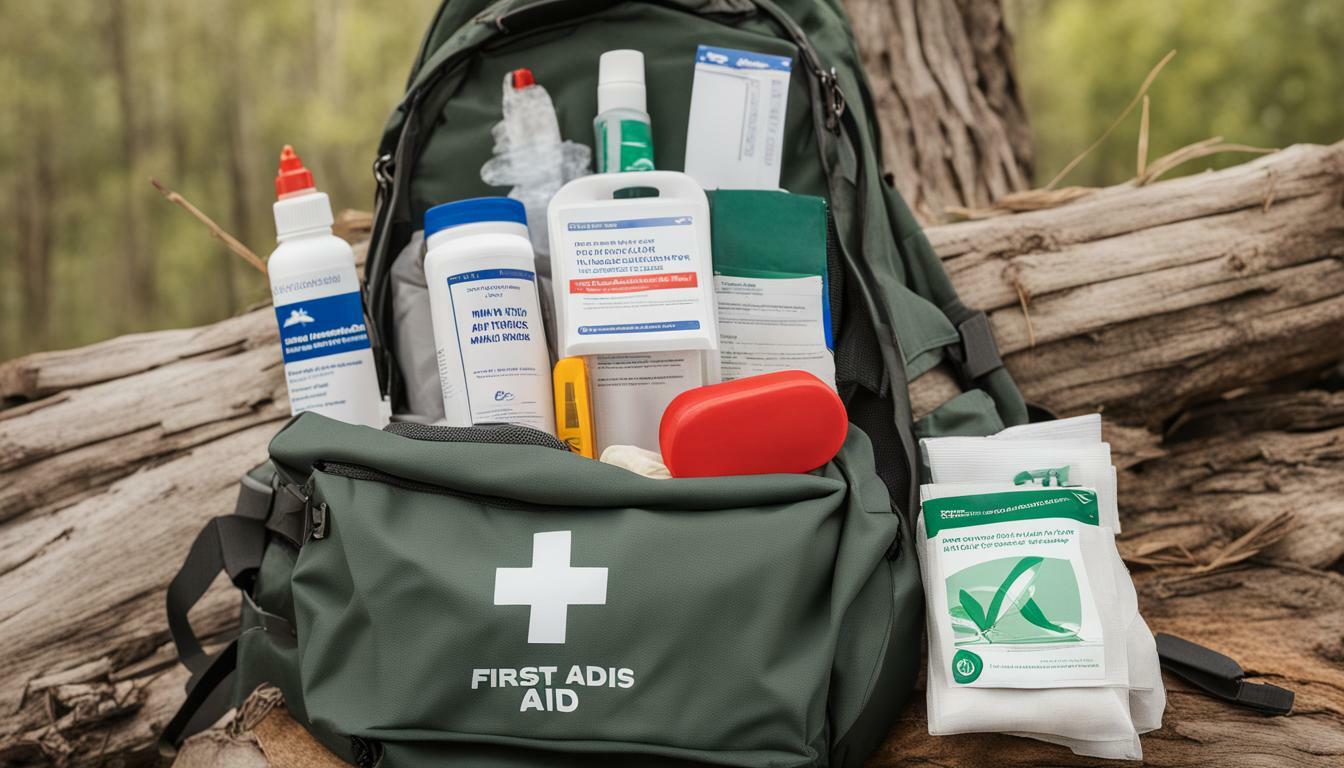
By staying prepared with the right knowledge and equipment, wildlife conservationists can handle emergencies with confidence and efficiency. It is also crucial to have a clear plan in case of an emergency. This includes establishing communication channels with the team, emergency services, and relevant authorities, and knowing the proper emergency reporting procedures.
Regular Training and Skill Updates
Wildlife conservationists must regularly update their first aid skills and knowledge to stay prepared for fieldwork emergencies. Attending refresher courses and brushing up on basic medical procedures, CPR, and wilderness first aid techniques can be helpful in building confidence and ensuring a quick response to emergencies.
Specialized First Aid Equipment
Wildlife conservationists must equip themselves with specialized first aid gear that is tailored to the specific challenges they face in nature. Adequate first aid kits should include items such as wound dressings, antiseptics, bandages, splints, gloves, and emergency contact information. By having the right equipment, conservationists can provide immediate aid to injured wildlife and handle emergencies with confidence and efficiency.
Common Wildlife Injuries and First Aid Techniques
Working as a wildlife conservationist involves exposure to various risks and potential injuries. Here are some of the most common wildlife injuries conservationists may encounter, along with appropriate first aid techniques:
| Injury Type | First Aid Technique |
|---|---|
| Animal bites and scratches | If bitten or scratched, thoroughly wash the wound with soap and water for at least 5 minutes. Apply pressure to stop bleeding and seek medical attention immediately. |
| Wounds and lacerations | Clean the wound with sterile saline solution or water and apply dressing. Keep the wound elevated if possible and seek medical attention as necessary. |
| Fractures and sprains | Immobilize the injured area with a splint or brace and seek medical attention immediately. Avoid applying ice or heat directly to the injury. |
| Heat exhaustion and heatstroke | Move the person to a cool place and remove excess clothing. Apply cool water to the skin and fan or place ice packs on the neck and armpits. Seek medical attention immediately. |
| Hypothermia | Move the person to a warm place and remove any wet clothing. Cover the person with blankets and provide warm liquids. Seek medical attention immediately. |
Having a wildlife emergency kit that includes essential first aid supplies is crucial in managing these injuries effectively.
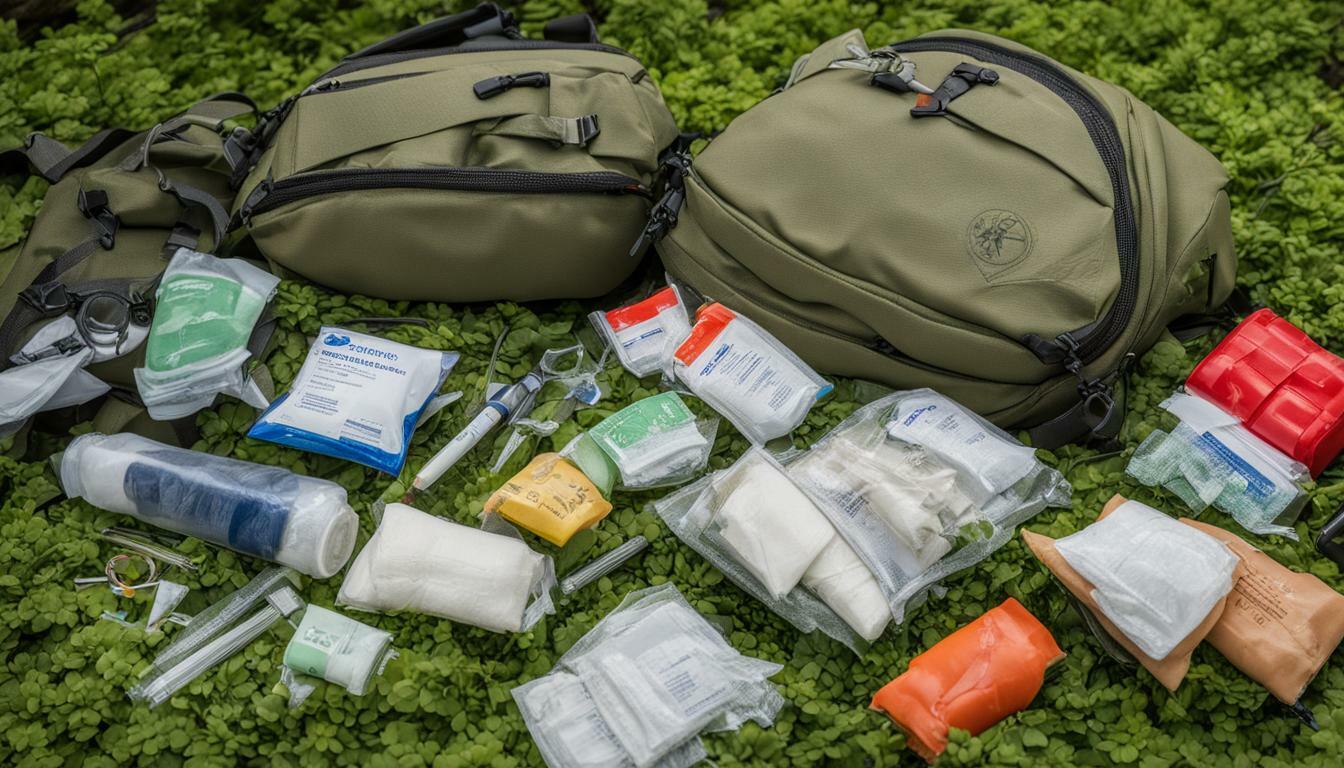
Wildlife conservationists should familiarize themselves with these common injuries and corresponding first aid techniques to better prepare themselves for emergencies. Proper training in wildlife conservation first aid is also crucial in addressing these injuries.
Emergency Communication and Reporting Procedures
During emergencies in wildlife conservation, effective communication and reporting procedures are crucial for ensuring the safety of both the wildlife and conservationists. Conservationists should establish clear communication channels with their team, emergency services and relevant authorities to ensure swift and appropriate action can be taken.
In addition to establishing communication channels, documenting and reporting emergencies is also vital for nature protection purposes. Conservationists should keep detailed records of any incidents and report them to the relevant authorities as soon as possible. This helps to ensure that proper action is taken and that the necessary measures are put in place to prevent similar incidents from occurring in the future.
Conservationists should also be equipped with the necessary conservationist first aid gear to manage emergencies effectively. Additionally, they should be trained in basic medical procedures, CPR, and wilderness first aid techniques to ensure that they are adequately prepared to handle any situation that may arise.
Overall, effective communication and reporting procedures are essential for ensuring successful wildlife conservation efforts. Through proper communication channels, documentation and reporting, and the use of conservationist first aid gear, conservationists can help to protect the UK’s natural habitats and wildlife.
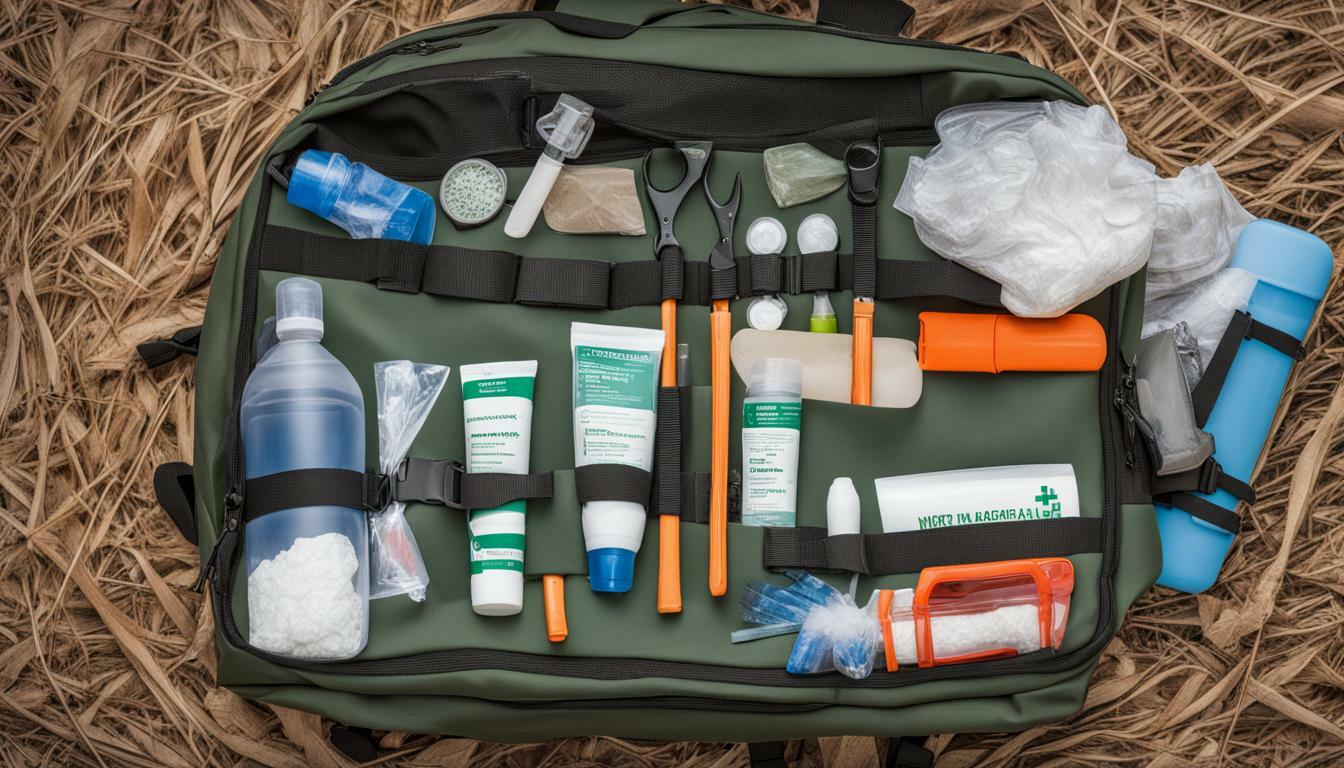
Maintaining and Restocking First Aid Kits
Proper maintenance and regular restocking of first aid kits for wildlife conservationists are essential to ensure they are always prepared for emergencies. By maintaining and restocking their first aid kits, conservationists can prevent valuable time from being lost during an emergency.
When restocking the kit, it is crucial to check the expiration dates of all supplies and replace any that are expired. Expired supplies may not be effective. It is also important to ensure that there are enough supplies available by regularly replenishing used items.
Wildlife conservationists should also consider the specific needs of their conservation work when restocking their first aid kits. They may need to include items such as emergency blankets, insect repellent, sunscreen, and tick removal tools.
Reliable sources for acquiring wildlife first aid supplies include online retailers, pharmacies, and medical supply stores. It is essential to choose reputable suppliers with a good reputation for quality products.
By properly maintaining and restocking first aid kits for wildlife conservationists, conservationists can ensure they are always prepared for emergencies and can protect themselves and the wildlife they work to preserve.
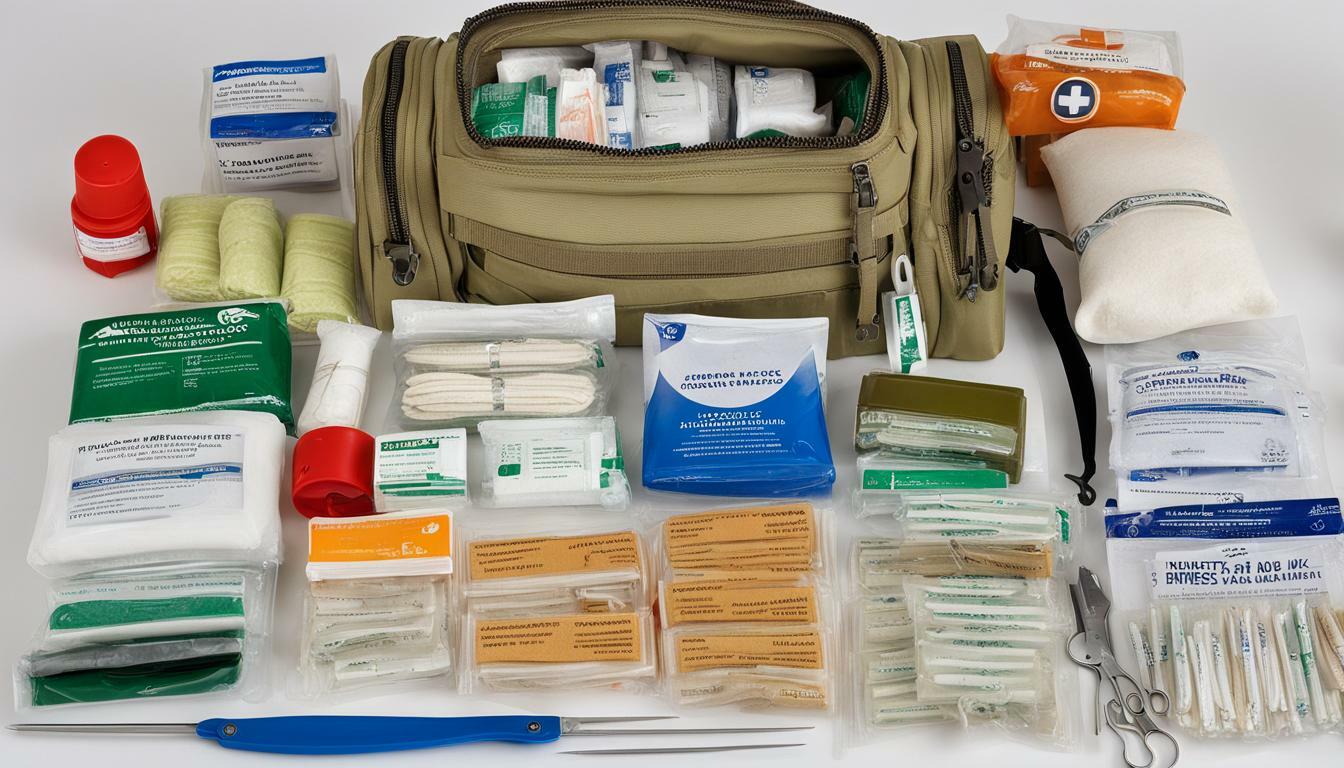
Wildlife Conservationists and Community Awareness
Wildlife conservationists play a vital role in protecting nature and wildlife habitats in the UK. However, their efforts can only be successful with the support and active participation of local communities.
Community awareness is crucial for nature protection, and wildlife conservationists must educate the public about responsible interaction with wildlife and the significance of first aid knowledge. Sharing stories and experiences with the public can help raise awareness about the challenges and risks that come with wildlife conservation work.
Conservationists can also collaborate with local organisations and schools to create educational programmes on nature protection. These programmes can provide an opportunity to highlight the importance of first aid kits for wildlife conservationists, and how proper first aid equipment and knowledge can save lives and protect wildlife.
Community involvement can also help identify and address wildlife emergencies promptly. By empowering the public with first aid knowledge, they can act as first responders in an emergency situation, providing immediate care to injured wildlife until conservationists arrive.
Ultimately, community awareness and involvement can help create a culture of respect and responsibility towards nature and wildlife in the UK.
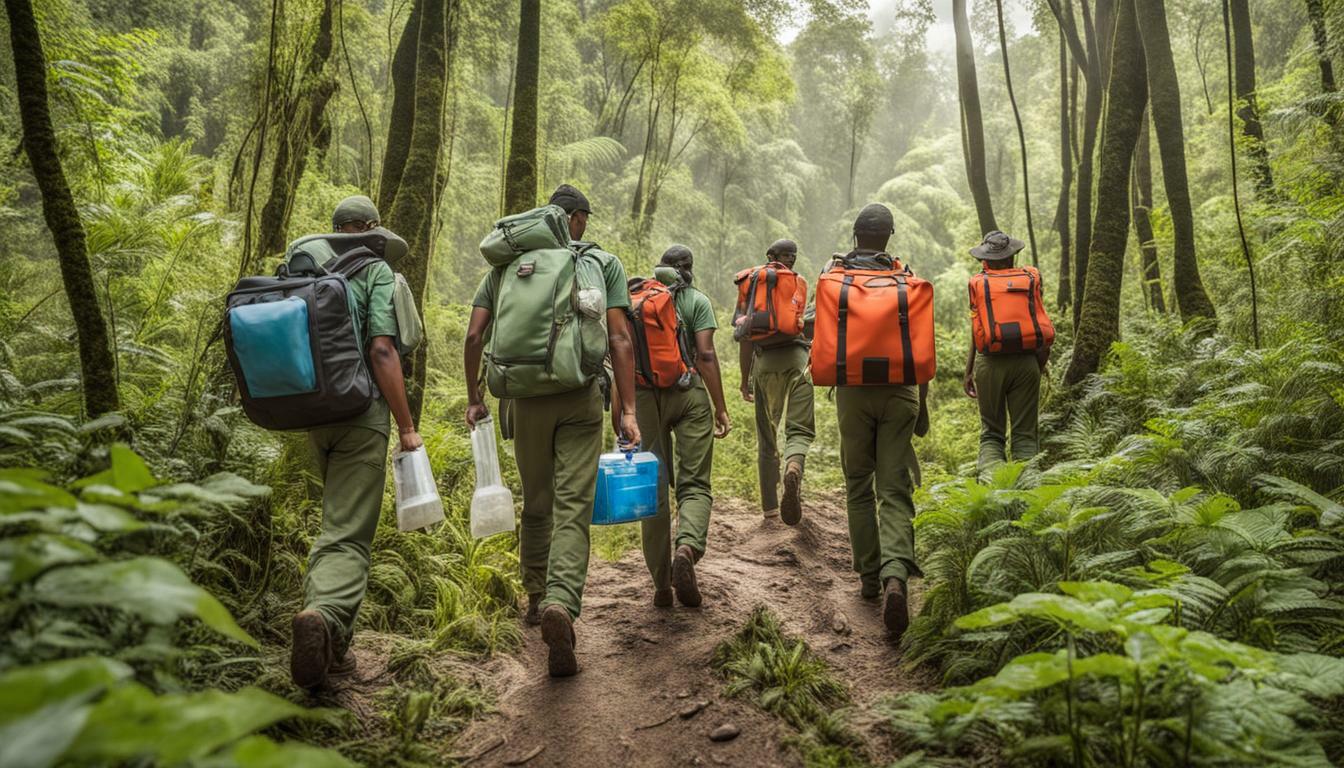
Conclusion
Wildlife conservationists can make a significant impact on nature protection in the UK, but they cannot do it alone. Community awareness and involvement are crucial for the success of wildlife conservation efforts. By educating the public about responsible interaction with wildlife, the significance of first aid knowledge and equipment, and involving them in emergency response, we can work towards creating a sustainable and harmonious coexistence with nature and wildlife habitats.
Conclusion
Wildlife conservationists play a crucial role in protecting and preserving the UK’s natural habitats and wildlife. However, their work comes with inherent risks that require specialized safety equipment and first aid supplies. Here are the key takeaways:
First aid kits for wildlife conservationists must be tailored to the unique risks and challenges of their work. These kits should include items such as wound dressings, antiseptics, bandages, splints, gloves, and emergency contact information.
Choosing the right first aid kit requires careful consideration of the type of conservation work, the location, the duration of fieldwork, and the conservationist’s specific needs.
Proper training in first aid is essential for wildlife conservationists. They should receive basic medical procedures, CPR, and wilderness first aid training to ensure they can effectively handle emergency situations.
Common wildlife injuries include animal bites, wounds, fractures, and heat-related illnesses. Conservationists must have the necessary first aid knowledge and techniques to address these emergencies.
Effective communication and reporting procedures are crucial during emergencies in wildlife conservation. Conservationists must establish clear communication channels with their team, emergency services, and relevant authorities, and document and report incidents for nature protection purposes.
Regular maintenance and restocking of first aid kits are essential to ensure their readiness for future emergencies. Conservationists must check expiration dates, replenish used supplies, and source reliable wildlife first aid supplies.
Lastly, raising community awareness about nature protection is vital for wildlife conservation efforts. Conservationists must educate the public about responsible interaction with wildlife, potential risks, and the significance of first aid knowledge, and involve them in conservation efforts.
In conclusion, wildlife conservationists must prioritize nature protection and equip themselves with the necessary first aid gear and knowledge to ensure their safety and the safety of wildlife. With proper training, equipment, and communication, they can effectively address emergencies and continue their vital work in protecting and preserving the UK’s natural habitats and wildlife.
